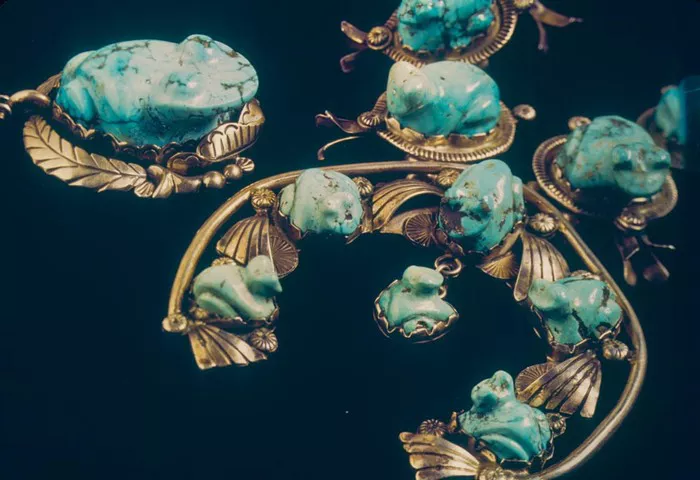Turquoise, with its captivating hue ranging from sky blue to green, has been revered for centuries for its beauty and mystical properties. This unique gemstone holds a significant place in various cultures worldwide, valued not only for its aesthetic appeal but also for its perceived healing and protective powers. In this article, we delve into the rich history and symbolism of turquoise, exploring its significance and the beliefs surrounding its use.
Understanding Turquoise
Turquoise is a hydrous phosphate mineral that belongs to the family of phosphates, arsenates, and vanadates. Its distinctive blue-green coloration is caused by the presence of copper, while its hardness ranges from 5 to 6 on the Mohs scale, making it relatively soft compared to other gemstones. This softness, however, does not diminish its beauty or appeal.
The name “turquoise” is derived from the French word for “Turkish,” as the gemstone was believed to have been first introduced to Europe through Turkey. However, turquoise has been mined and utilized for ornamental and ceremonial purposes for thousands of years in regions such as Persia (modern-day Iran), Egypt, China, and the southwestern United States.
What is the Significance of Turquoise?
Turquoise holds a special significance in various cultures, often symbolizing wisdom, nobility, and the power of immortality. In Native American traditions, turquoise is considered a sacred stone, believed to offer protection and bring good fortune to those who wear it. It is also seen as a symbol of friendship and peace.
In ancient Egypt, turquoise was highly prized and often used in jewelry and amulets. It was associated with the goddess Hathor, who was revered for her protective and nurturing qualities. Similarly, in Persia, turquoise was believed to protect the wearer from evil and bring them good luck.
In modern times, turquoise continues to be valued for its metaphysical properties, with many believing that it can promote spiritual attunement and enhance communication with the spiritual realm. It is also thought to have a calming effect on the mind and body, helping to alleviate stress and anxiety.
Healing Properties of Turquoise
Turquoise is often referred to as a “healing stone” due to its perceived ability to promote physical and emotional well-being. It is believed to have powerful healing properties, especially in relation to the throat and respiratory system. Some believe that wearing turquoise jewelry can help alleviate throat infections, asthma, and other respiratory ailments.
Additionally, turquoise is thought to have a purifying effect on the body, helping to detoxify and cleanse the system. It is also believed to be beneficial for the immune system, helping to boost overall health and vitality.
Conclusion
In conclusion, turquoise is much more than just a beautiful gemstone; it is a symbol of ancient wisdom, protection, and healing. Whether worn as jewelry or used in spiritual practices, turquoise continues to captivate and inspire people around the world. Its significance transcends time and culture, making it a truly remarkable gemstone with a rich and storied history.


